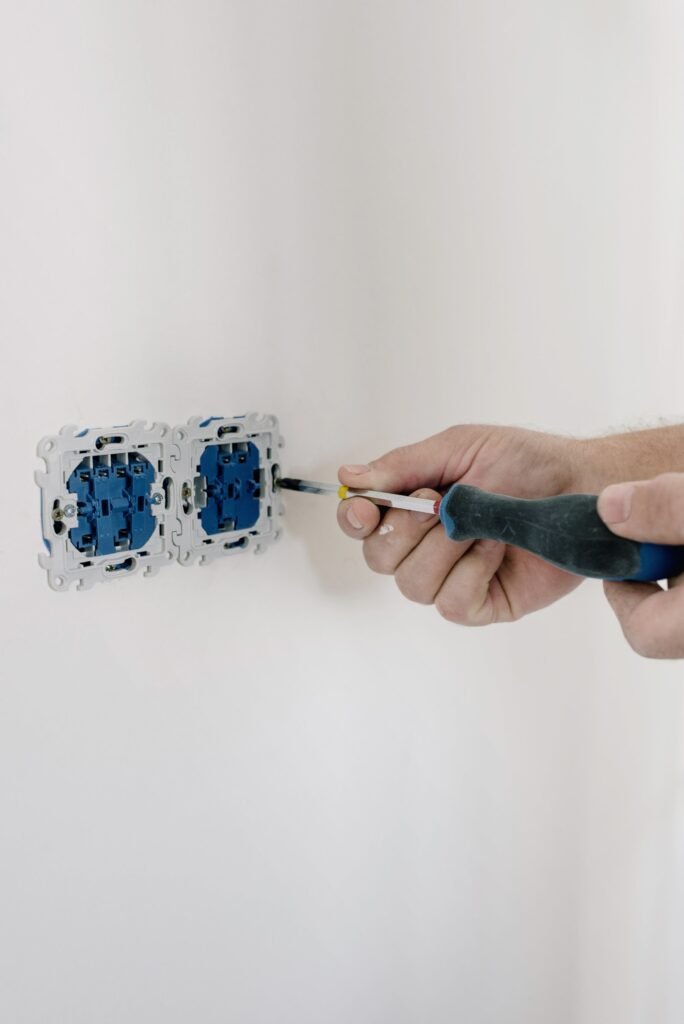You’re driving down the road, enjoying the wind in your hair and the open road ahead when suddenly you hear a disconcerting thud. Your heart sinks as you pull over to find a flat tire. We’ve all been there. But fear not, because in this article, you’ll discover expert advice on how to maintain healthy tires and avoid those inconvenient and potentially dangerous situations. From checking tire pressure to rotating your tires regularly, these essential tire maintenance tips will keep you safe on the road and ensure smooth travels for miles to come. So buckle up, grab a cup of coffee, and let’s dive into the world of tire care!
Regular Inspections
Visual Inspection
Regular visual inspections of your tires are an essential part of tire maintenance. By visually inspecting your tires, you can identify any visible signs of damage or wear and address them before they become a more significant problem. Look for any cuts, bulges, or cracks on the tire surface. Additionally, inspect the sidewalls for any signs of damage or deterioration.
Tire Pressure Check
Maintaining the correct tire pressure is crucial for the overall performance and longevity of your tires. It is recommended to check your tire pressure at least once a month, as tires can lose pressure over time. Underinflated tires can lead to uneven tread wear and decreased fuel efficiency, while overinflated tires can impact handling and traction. Use a reliable tire pressure gauge to measure the pressure accurately.
Tire Tread Depth
The tire tread is responsible for providing the necessary grip and traction on the road. Therefore, it is vital to monitor the tread depth regularly. Using a tire tread depth gauge, measure the depth of the tread grooves. Adequate tread depth is essential for proper water dispersion and improved handling. Replace your tires if the tread depth falls below 2/32 of an inch to ensure optimal safety on the road.
Alignment and Suspension Inspection
Proper alignment and suspension play a significant role in tire health and performance. Misaligned wheels can cause uneven tire wear, impacting the lifespan of your tires. It’s important to have a professional inspect and adjust the wheel alignment periodically. Additionally, suspension components should be inspected to identify any issues that may affect the tires’ contact with the road. By addressing alignment and suspension problems promptly, you can avoid unnecessary tire damage.
Maintaining Correct Tire Pressure
Check Tire Pressure Regularly
Monitoring your tire pressure regularly is one of the simplest yet most effective ways to maintain healthy tires. Get in the habit of checking your tire pressure at least once a month, especially before embarking on a long trip. Temperature changes can significantly affect tire pressure, so it’s essential to stay vigilant.
Use a Reliable Tire Pressure Gauge
To maintain accurate tire pressure, it’s crucial to use a reliable tire pressure gauge. There are various types of tire pressure gauges available, such as digital and analog gauges. Choose one that suits your preference but ensure it provides accurate readings. It’s a good idea to keep a tire pressure gauge in your vehicle, so you can check your tire pressure conveniently whenever necessary.
Incorporate Tire Pressure Monitoring Systems (TPMS)
In addition to manual tire pressure checks, consider equipping your vehicle with a Tire Pressure Monitoring System (TPMS). TPMS is an automated system that monitors your tire pressure and alerts you if it falls below the recommended level. TPMS can help ensure your tires are always properly inflated, providing peace of mind and enhancing safety on the road.

This image is property of images.pexels.com.
Proper Tire Rotation
Understand Recommended Rotation Patterns
Tire rotation involves moving tires from one position to another on your vehicle to promote even tread wear. It’s important to consult your vehicle’s owner’s manual or seek advice from a tire professional to understand the recommended rotation patterns for your specific vehicle. Different tire types, such as front-wheel-drive, rear-wheel-drive, or all-wheel-drive, require specific rotation patterns to maximize tire lifespan.
Follow Mileage Intervals for Rotations
To maintain optimum tire performance, follow the recommended mileage intervals for tire rotations. Typically, tire rotations should be performed every 5,000 to 7,500 miles, but this can vary depending on your vehicle and driving habits. Regular rotations ensure that your tires wear evenly, prolonging their lifespan and improving overall safety.
Consider Directional Tire Rotation
Directional tires have tread patterns specifically designed to rotate in one direction. When rotating directional tires, it’s important to follow the correct rotation pattern to maintain their performance. Typically, directional tires are rotated either front-to-back or side-to-side. Consult your tire manufacturer’s guidelines or seek professional advice to ensure you’re rotating your directional tires correctly.
Balancing the Tires
Purpose of Tire Balancing
Tire balancing is a crucial maintenance task that involves evenly distributing the weight of your tires and wheels. Tires that are out of balance can lead to vibrations, uneven tread wear, and even damage to suspension components. Balancing your tires helps ensure a smooth and comfortable ride, improves tire longevity, and prevents unnecessary wear on other parts of your vehicle.
Symptoms of Unbalanced Tires
If you experience vibrations or shaking in your steering wheel, seat, or floorboard, it may be a sign that your tires are out of balance. Uneven tread wear or a steering wheel that pulls to one side can also indicate the need for tire balancing. If you notice any of these symptoms, it’s important to have your tires balanced promptly to prevent further damage or discomfort.
Seek Professional Balancing
Tire balancing should be performed by a qualified professional with the necessary equipment and expertise. They will use specialized machinery to identify any imbalances and add small weights to the wheels to achieve proper balance. Attempting to balance your tires yourself may lead to inaccurate results and potential damage to the tire or wheel.
Timing of Tire Balancing
Tire balancing should be performed whenever you purchase new tires or notice any symptoms of imbalance. Additionally, it is recommended to have your tires balanced every 6,000 to 8,000 miles or as advised by your tire manufacturer or mechanic. Regular tire balancing will help extend the life of your tires and maintain a smooth, comfortable ride.

This image is property of images.pexels.com.
Wheel Alignment
Significance of Wheel Alignment
Proper wheel alignment is essential for maintaining tire health and ensuring optimal vehicle performance. Misaligned wheels can cause uneven tire wear, decreased fuel efficiency, and compromised handling and stability. Wheel alignment involves adjusting the angles of the wheels to meet the manufacturer’s specifications, allowing for even tire wear and improved vehicle dynamics.
Recognizing Misalignment
There are several signs that your wheels may be misaligned. Uneven or rapid tire wear, pulling to one side while driving, or a crooked steering wheel when driving straight are all indicators that it’s time to have your alignment checked. You may also notice increased vibrations or a decrease in overall vehicle stability. If you experience any of these symptoms, it’s crucial to have your alignment inspected and corrected.
Seek Professional Alignment
Wheel alignment is a precise task that should be performed by a professional using specialized equipment. The alignment process involves measuring and adjusting the camber, caster, and toe angles of the wheels based on the vehicle manufacturer’s specifications. Professional alignment ensures accurate results and helps prevent premature tire wear or damage.
Frequency of Alignment Checks
To maintain optimal tire health, it is generally recommended to have your wheel alignment checked annually or every 10,000 to 12,000 miles. However, certain factors such as driving on rough roads, hitting curbs or potholes, or noticing any alignment-related symptoms should prompt an immediate inspection. Regular alignment checks will help prolong the life of your tires and contribute to a smoother, safer driving experience.
Proper Tire Storage
Cleaning and Inspection
Proper tire storage is essential to maintain the quality and performance of your tires, especially when they are not in use. Before storing your tires, clean them thoroughly to remove any dirt, debris, or brake dust. Inspect the tires for any signs of damage, such as cuts, bulges, or cracks. If you notice any significant damage, consider replacing the tire instead of storing it.
Tire Positioning
When storing tires, it’s important to consider how they are positioned. If possible, store the tires vertically rather than stacking them flat. This helps prevent damage to the sidewalls and avoids unnecessary strain on the tires. If you need to stack the tires, place a barrier, such as a piece of wood, between each tire to prevent them from touching and potentially causing damage.
Avoiding Direct Sunlight and Heat Exposure
When choosing a storage location for your tires, opt for a cool, dry area away from direct sunlight and heat sources. Exposure to excessive heat and UV rays can accelerate tire deterioration and cause rubber to degrade over time. It’s best to store tires in an area with consistent temperature and humidity levels, such as a garage or climate-controlled storage facility.
Preventing Flat Spots
Leaving your tires stationary for extended periods can lead to flat spots, where the weight of the vehicle compresses a portion of the tire for an extended period. To prevent flat spots, inflate your tires to the recommended pressure before storing them. Additionally, consider rotating or moving the tires every few months to minimize the chance of flat spotting.

This image is property of images.pexels.com.
Avoiding Overloading
Understanding Load Index and Weight Limits
Every tire has a specific load index, which indicates the maximum weight it can safely carry. It is crucial to understand the load index of your tires and avoid exceeding their weight limits. Overloading your tires can lead to excessive heat build-up, increased wear, and potential tire failure. Refer to your vehicle’s owner’s manual or consult a tire professional to ensure you are within the recommended weight limits for your tires.
Distributing the Load Evenly
When carrying a heavy load, distribute the weight as evenly as possible across all tires. Uneven weight distribution can cause uneven tire wear and compromise the handling and stability of your vehicle. If you frequently carry heavy loads, consider using a weight-distributing hitch or adjusting the tire pressure according to the load to ensure balanced weight distribution.
Considering Load Ratings
Alongside the load index, tires also have load ratings that indicate the maximum load capacity for a given tire pressure. It’s essential to consider the load ratings and set the tire pressure accordingly when carrying heavy loads. By adhering to the load ratings, you can maintain tire integrity, prevent excessive wear, and ensure the safety of your vehicle.
Avoiding Harsh Driving Habits
Avoid Sudden Acceleration and Braking
Aggressive driving habits, such as sudden acceleration and hard braking, can significantly impact the health of your tires. These sudden actions put excessive stress on the tires, leading to accelerated wear and decreased tire lifespan. Gradually accelerating and braking smoothly not only helps maintain tire health but also promotes fuel efficiency and a more comfortable driving experience.
Reduce Speed on Rough Surfaces
Driving at high speeds on rough or uneven surfaces can cause excessive vibration and damage to your tires. Additionally, hitting potholes or bumps at high speeds can result in tire punctures or sidewall damage. It’s important to reduce your speed and drive cautiously on rough roads to minimize the risk of tire damage and ensure a safer journey.
Be Cautious of Potholes and Obstacles
Potholes and other road obstacles can pose a significant threat to your tires. Hitting a pothole, especially at high speeds, can cause tire damage, bent rims, or misalignment. To protect your tires, be vigilant while driving and try to avoid potholes when possible. If you encounter a pothole or obstacle, slow down and navigate around it carefully to minimize the impact on your tires.
Proper Tire Repair
Understanding Repairable Tire Damage
Tire repairs should only be performed on specific types of damage that meet certain criteria. Small punctures, usually caused by nails or screws, can often be repaired if they are located in the tread area and their size is within the repairable limits. However, certain types of damage, such as sidewall punctures or large cuts, are unrepairable and require tire replacement. It is crucial to understand the limitations of tire repairs and consult a professional for an accurate assessment.
Seeking Professional Assistance
When it comes to tire repairs, it is always recommended to seek professional assistance. Tire professionals have the expertise and equipment to properly assess the damage and determine if a repair is feasible. Attempting DIY repairs or relying on temporary fixes may compromise tire integrity and jeopardize your safety on the road. Trusting a professional ensures that the repair is performed correctly and that the tire remains safe and reliable.
Avoid Temporary or DIY Repairs
Temporary or DIY tire repairs, such as using sealants or plugs, should only be considered as emergency solutions until you can reach a professional. These temporary fixes are not intended for long-term use and may not guarantee the structural integrity of the tire. It is best to have a tire professional assess the damage and provide a reliable, permanent repair or recommend tire replacement if necessary.
Knowing When to Replace Tires
Understanding Tread Wear Indicators
Tires come equipped with tread wear indicators, which are small rubber bars located in the tire grooves. As the tire tread wears down, these indicators become more visible. When the tread wear indicators are flush with the tire tread, it is a clear sign that the tires have reached the legal minimum tread depth and need to be replaced. Regularly monitor the tread wear indicators to ensure your tires remain safe and roadworthy.
Checking Tire Age
Tires have a lifespan, regardless of the amount of tread remaining. Even if your tires have sufficient tread depth, it is essential to consider their age. Over time, the rubber compounds in the tire deteriorate, leading to decreased performance and increased risk of failure. As a general guideline, replace your tires if they are over six years old, regardless of their apparent condition.
Monitoring Sidewall Damage
Sidewall damage is particularly concerning, as it compromises the structural integrity of the tire. Check the sidewalls regularly for any bulges, cracks, or cuts. These signs can indicate internal damage or weakened tire structure. If you notice significant sidewall damage, it is crucial to replace the tire immediately, as it poses a safety risk and may lead to a sudden tire failure.
Professional Inspection
If you are unsure about the condition of your tires or notice any signs of wear or damage, it is always wise to seek a professional inspection. Tire professionals have the expertise to thoroughly assess your tires and provide accurate advice on whether they need to be replaced. Regular professional inspections can help ensure your tires are always in optimal condition for a safe and enjoyable driving experience.
By following these comprehensive tire maintenance tips, you can keep your tires in excellent condition, prolong their lifespan, and ensure your safety on the road. Regular inspections, proper tire pressure maintenance, tire rotations, and alignments, along with responsible driving habits, will contribute to the longevity and performance of your tires. Remember to seek professional assistance when needed, and always prioritize the health and well-being of your tires for a smooth and worry-free journey.





